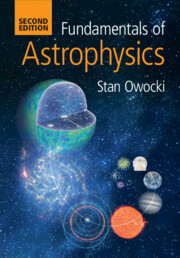Refine search
Actions for selected content:
37953 results in Cambridge Textbooks

Fundamentals of Astrophysics
-
- Published online:
- 10 November 2025
- Print publication:
- 24 July 2025
-
- Textbook
- Export citation
Preface
-
- Book:
- The Politics of Human Rights
- Published online:
- 12 November 2025
- Print publication:
- 06 November 2025, pp xv-xvii
-
- Chapter
- Export citation
Dedication
-
- Book:
- The Politics of Human Rights
- Published online:
- 12 November 2025
- Print publication:
- 06 November 2025, pp v-vi
-
- Chapter
- Export citation
Chapter 5 - Context of Human Rights Violations
- from Part II - Explaining Human Rights Violations
-
- Book:
- The Politics of Human Rights
- Published online:
- 12 November 2025
- Print publication:
- 06 November 2025, pp 144-171
-
- Chapter
- Export citation
Part II - Explaining Human Rights Violations
-
- Book:
- The Politics of Human Rights
- Published online:
- 12 November 2025
- Print publication:
- 06 November 2025, pp 76-205
-
- Chapter
- Export citation
Part III - Improving the Protection of Human Rights
-
- Book:
- The Politics of Human Rights
- Published online:
- 12 November 2025
- Print publication:
- 06 November 2025, pp 206-275
-
- Chapter
- Export citation
Acknowledgements
-
- Book:
- The Politics of Human Rights
- Published online:
- 12 November 2025
- Print publication:
- 06 November 2025, pp xviii-xviii
-
- Chapter
- Export citation
Index
-
- Book:
- The Politics of Human Rights
- Published online:
- 12 November 2025
- Print publication:
- 06 November 2025, pp 291-300
-
- Chapter
- Export citation
Chapter 6 - Human Rights and the Internet
- from Part II - Explaining Human Rights Violations
-
- Book:
- The Politics of Human Rights
- Published online:
- 12 November 2025
- Print publication:
- 06 November 2025, pp 172-205
-
- Chapter
- Export citation
Abbreviations
-
- Book:
- The Politics of Human Rights
- Published online:
- 12 November 2025
- Print publication:
- 06 November 2025, pp xix-xxi
-
- Chapter
- Export citation
Chapter 8 - International Mechanisms to Protect Human Rights
- from Part III - Improving the Protection of Human Rights
-
- Book:
- The Politics of Human Rights
- Published online:
- 12 November 2025
- Print publication:
- 06 November 2025, pp 240-271
-
- Chapter
- Export citation
Bibliography
-
- Book:
- The Politics of Human Rights
- Published online:
- 12 November 2025
- Print publication:
- 06 November 2025, pp 276-290
-
- Chapter
- Export citation
Chapter 9 - Towards the Future
- from Part III - Improving the Protection of Human Rights
-
- Book:
- The Politics of Human Rights
- Published online:
- 12 November 2025
- Print publication:
- 06 November 2025, pp 272-275
-
- Chapter
- Export citation
Chapter 1 - What Are Human Rights?
- from Part I - Human Rights and State Responsibilities
-
- Book:
- The Politics of Human Rights
- Published online:
- 12 November 2025
- Print publication:
- 06 November 2025, pp 2-33
-
- Chapter
- Export citation
Figures
-
- Book:
- The Politics of Human Rights
- Published online:
- 12 November 2025
- Print publication:
- 06 November 2025, pp xi-xi
-
- Chapter
- Export citation
Part I - Human Rights and State Responsibilities
-
- Book:
- The Politics of Human Rights
- Published online:
- 12 November 2025
- Print publication:
- 06 November 2025, pp 1-75
-
- Chapter
- Export citation
Boxes
-
- Book:
- The Politics of Human Rights
- Published online:
- 12 November 2025
- Print publication:
- 06 November 2025, pp xiii-xiv
-
- Chapter
- Export citation
Contents
-
- Book:
- The Politics of Human Rights
- Published online:
- 12 November 2025
- Print publication:
- 06 November 2025, pp vii-x
-
- Chapter
- Export citation
Chapter 2 - Responsibilities and Obligations
- from Part I - Human Rights and State Responsibilities
-
- Book:
- The Politics of Human Rights
- Published online:
- 12 November 2025
- Print publication:
- 06 November 2025, pp 34-75
-
- Chapter
- Export citation
Copyright page
-
- Book:
- The Politics of Human Rights
- Published online:
- 12 November 2025
- Print publication:
- 06 November 2025, pp iv-iv
-
- Chapter
- Export citation
